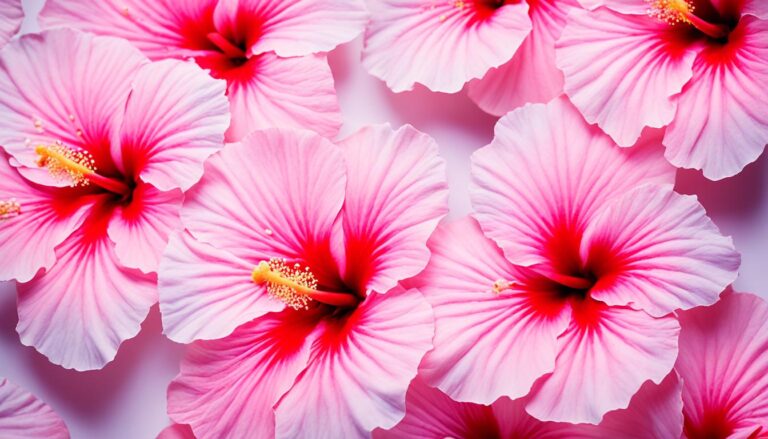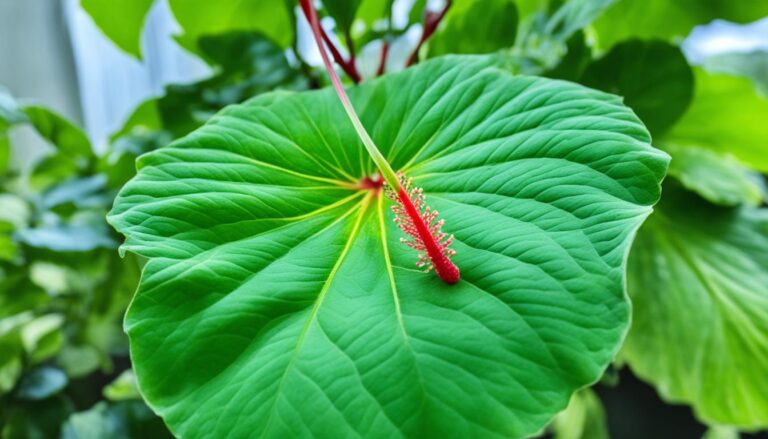Master Your Hibiscus Bush Size: Growth Tips & Troubleshooting
When we think of adding a splash of tropical flair to our gardens, hibiscus bushes often come to mind. Their large, colorful blooms are a sight to behold, but before we get carried away with visions of a lush paradise, it’s crucial to consider their size. Understanding how big hibiscus bushes can get is key to ensuring they fit perfectly in our garden space, without overshadowing other plants.
We’ve all seen gardens where plants are crammed together, struggling for light and space. To avoid this, we’ll dive into what factors influence the size of a hibiscus bush and how you can manage its growth. Whether you’re planning a new garden layout or looking to incorporate hibiscus into your existing space, we’ve got the insights to help you make the most of these stunning plants.
Key Takeaways
- Variety Impacts Size: Understanding the specific variety of hibiscus bush is critical; tropical hibiscus reaches 4 to 8 feet in height, whereas hardy hibiscus can grow up to 15 feet tall, significantly influencing garden spacing and layout plans.
- Environmental Conditions Matter: Hibiscus growth is heavily affected by sunlight, soil type, and temperature. Providing full sun, well-draining soil, and consistent watering encourages maximum growth potential.
- Pruning is Key for Size Management: Regular and strategic pruning not only maintains the desired shape and size of a hibiscus bush but also promotes fuller, bushier growth and more abundant flowering.
- Optimal Nutrition Supports Vibrant Growth: Feeding hibiscus bushes with a balanced, slow-release fertilizer, especially one high in potassium, during the growing season is essential for lush foliage and bright blooms.
- Common Misconceptions Can Impact Hibiscus Health: Misunderstandings such as uniform care requirements for all varieties, neglecting the need for pruning and soil amendments, can adversely affect hibiscus bush size and health.
- Troubleshooting Size Issues: Addressing stunted growth involves ensuring optimal soil conditions, correct watering habits, and adequate sunlight. Managing overgrowth requires careful pruning, fertilization adjustments, and proper watering practices.
Understanding Hibiscus Bush Size Variability
Hibiscus Varieties and Their Average Sizes
When delving into the world of hibiscus, it’s crucial to recognize the broad spectrum of species within this genus, each contributing to size variability among hibiscus bushes. Among the numerous varieties, two of the most common types found in gardens are the tropical hibiscus (Hibiscus rosa-sinensis) and the hardy hibiscus (Hibiscus moscheutos), with the former being more prevalent in warmer climates and the latter in cooler regions.
Tropical hibiscus bushes typically achieve heights ranging between 4 to 8 feet and equally impressive spreads, creating a lush, vibrant display of foliage and blooms. On the other hand, hardy hibiscus bushes, celebrated for their ability to withstand colder conditions, often grow taller, reaching up to 15 feet in height with a spread that can also extend up to 10 feet. This variation alone highlights the need for gardeners to carefully consider the specific hibiscus variety when planning garden spaces.
Factors That Influence Hibiscus Bush Growth
Understanding the growth of hibiscus bushes involves more than just recognizing the differences among varieties. Several factors play a crucial role in determining the ultimate size of these stunning plants. Firstly, environmental conditions such as sunlight, soil type, and temperature significantly impact growth. Hibiscus bushes thrive in full sun and well-draining soil, conditions which if met, contribute to achieving their maximum size potential.
Additionally, the frequency and type of pruning can dramatically influence the shape and size of hibiscus bushes. Regular pruning not only encourages bushier growth but can also be used to control and maintain the size according to gardeners’ preferences. Lastly, water and nutrition play pivotal roles. Consistent watering and the application of well-balanced fertilizers promote healthy growth and blooming, affecting the overall size.
In sum, while the inherent characteristics of different hibiscus varieties set a baseline for size, gardeners wield significant influence over their hibiscus bushes’ final dimensions through careful management of environmental conditions, pruning practices, and nutritional support. Understanding these elements allows for the successful incorporation of hibiscus bushes into garden layouts, ensuring they contribute to the desired aesthetic without overwhelming the space.
Optimal Conditions for Hibiscus Growth

Ensuring the optimal growth of hibiscus bushes hinges on providing the right conditions. As discussed, the size of hibiscus bushes can vary significantly between the tropical and hardy varieties, influenced by factors like environmental conditions, pruning, and nutrition. Let’s delve into the specifics concerning soil type, nutrient requirements, sunlight, and watering needs to guide gardeners in fostering the most vibrant and healthily-sized hibiscus bushes.
Soil Type and Nutrient Requirements
Hibiscus bushes flourish in well-draining soil that retains moisture without becoming waterlogged. A slightly acidic to neutral pH, ranging from 6.5 to 7.0, proves ideal for these plants. Amending the soil with organic matter, such as compost or peat moss, will enhance drainage and provide the hibiscus with essential nutrients for growth. Regular applications of a balanced, slow-release fertilizer, particularly one high in potassium, support lush foliage and vibrant blooms. Hibiscus plants are heavy feeders, requiring a consistent supply of nutrients during the growing season to reach their maximum size potential.
Sunlight and Watering Needs
Sunlight plays a critical role in the growth and flowering of hibiscus bushes. They need at least 6 hours of direct sunlight daily to thrive. Positioning hibiscus bushes in a spot with ample morning sunlight and some protection from the harsh afternoon sun in hotter climates can promote healthier growth and more prolific blooming. Watering needs are equally critical, as hibiscus bushes prefer a consistent moisture level. It’s essential to water them thoroughly while allowing the top inch of soil to dry out between waterings to prevent root rot. During hot, dry periods, a deep watering a few times a week encourages deeper root growth and helps hibiscus bushes manage drought stress better, contributing to their overall size and health.
By understanding and applying the right soil amendments, ensuring nutrient availability, and providing adequate sunlight and water, gardeners can significantly influence the growth and size of their hibiscus bushes. A commitment to meeting these optimal conditions promises gardeners vibrant and flourishing hibiscus bushes that stand as testament to their careful nurturing.
Common Misconceptions About Hibiscus Size

After exploring how various factors like soil type, nutrients, sunlight, and watering needs contribute to the ideal growth conditions for hibiscus bushes, it’s crucial to address some common misconceptions about hibiscus size. These misconceptions often lead to improper care techniques, which can adversely affect the health and size of hibiscus plants. By debunking these myths, we aim to provide clearer guidance on managing hibiscus bushes effectively.
Debunking Myths About Hibiscus Care and Size
One prevalent myth is that all hibiscus bushes need the same amount of sunlight and water, regardless of their variety. However, as we mentioned earlier, tropical and hardy hibiscus varieties have different requirements. For instance, while tropical hibiscus thrives in full sunlight, hardy hibiscus can tolerate partial shade. Similarly, watering needs can vary based on the climate and soil type. Believing that one size fits all for care can lead to either over or underexposure to essential growth factors, impacting the plant’s size and health.
Another misconception is that hibiscus bushes naturally grow to their maximum size without human intervention. This belief overlooks the importance of factors such as pruning, which we’ll discuss in more detail next, and fertilization. Hibiscus plants benefit from balanced fertilizers that cater to their specific nutritional needs, promoting optimal growth and flowering.
Lastly, there’s a false notion that hibiscus can grow in any soil type without amendments. Our previous discussions highlighted the significance of well-draining soil with a slightly acidic to neutral pH and the addition of organic matter. Ignoring soil conditions can stunt plant growth, leading to smaller bushes with fewer blooms.
How Pruning Affects Hibiscus Bush Size
Pruning stands out as a critical practice in influencing the size and shape of hibiscus bushes. Contrary to the belief that pruning is detrimental to plant size, strategic cutting back of hibiscus branches can actually encourage thicker growth and more blooms. Pruning in early spring, before the new growth starts, allows gardeners to shape the bush and remove any dead or weak branches, promoting a healthier and more vibrant plant.
Moreover, occasional thinning of the hibiscus bush can enhance light penetration and air circulation within the plant, crucial factors for preventing diseases and encouraging growth. However, excessive or improper pruning can harm the plant. It’s vital to prune just above the nodes where new leaves and branches can form, avoiding deep cuts that could stress the plant and reduce its overall size and flowering capacity.
Tips for Managing Hibiscus Bush Size
Building on the foundation of creating optimal conditions for hibiscus growth and debunking common misconceptions about their size, it’s crucial to delve into specific practices. Managing the size of hibiscus bushes not only involves understanding their basic needs but also implementing targeted strategies such as effective pruning techniques and selecting the right fertilizers alongside an optimal feeding schedule. These practices ensure the bush remains healthy, vibrant, and adds aesthetic value to your garden. Here, we’ll explore how to leverage these practices to manage the size and health of your hibiscus bush efficiently.
Effective Pruning Techniques
Pruning stands out as a pivotal practice for managing hibiscus bush size effectively. It involves selectively removing parts of the plant, such as branches or stems, to improve its form and promote healthier growth. For hibiscus bushes, the ideal pruning time is in late winter or early spring, before new growth begins. This timing allows gardeners to shape the bush without hampering its ability to produce blooms in the upcoming season.
- Thin Out Dense Areas: Focus on removing any crowded stems to increase air circulation and light penetration throughout the bush. This step is vital for preventing diseases and promoting a more uniform growth.
- Remove Dead or Weak Branches: Any parts of the plant that are dead, diseased, or damaged should be the first to go. This action prevents potential infestations and allows the plant to direct more energy to healthy growth.
- Shape for Desired Size: While pruning, it’s also an opportunity to shape the hibiscus bush according to your preference. However, ensure not to remove more than one-third of the plant’s total mass in a single pruning session to prevent stress.
These pruning techniques, when applied correctly, can significantly influence the bush’s size, encouraging a denser form with more blooms.
Suitable Fertilizers and Feeding Schedule
Besides pruning, the choice of fertilizer and the feeding schedule play essential roles in managing the size and health of a hibiscus bush.
- Selecting the Right Fertilizer: Opt for a balanced, slow-release fertilizer that’s rich in potassium and has an NPK ratio close to 17-5-24. Potassium encourages flowering, while nitrogen supports leafy growth. However, too much nitrogen can lead to excessive green growth at the expense of blooms.
- Appropriate Feeding Schedule: Fertilize your hibiscus bush every four to six weeks during the growing season, which spans from early spring to late summer. It’s crucial to reduce fertilization frequency or stop altogether during the dormant season (fall and winter) to avoid stimulating growth when the plant should be resting.
Troubleshooting Common Hibiscus Size Issues
Harnessing our expertise, we delve into troubleshooting common issues impacting the size of hibiscus bushes. By recognizing and addressing these challenges early, you can ensure your hibiscus thrives, achieving its ideal size and contributing to a vibrant garden.
Dealing with Stunted Growth
Stunted growth in hibiscus bushes often stems from inadequate growing conditions. Ensuring the resolution of these issues is vital for the health and size of the plants. Here are key steps to tackle this problem:
- Inspect the Soil: Hibiscus bushes require well-draining soil rich in nutrients. Conduct a soil test to determine if your garden lacks essential nutrients or has poor drainage. Amending the soil with organic matter or compost can improve its texture and fertility.
- Evaluate Watering Habits: Both overwatering and underwatering can lead to stunted growth. Hibiscus plants prefer consistently moist soil. Adjust your watering schedule based on weather conditions to maintain proper moisture levels without causing waterlogged roots.
- Manage Pests and Diseases: Pests and diseases can significantly impact plant growth. Regularly inspect your hibiscus for signs of infestation or illness. Utilize organic pesticides or fungicides when necessary, following product guidelines to protect the plant and environment.
- Optimize Sunlight Exposure: Hibiscus bushes thrive in full sun to partial shade. If your plant isn’t receiving enough light, consider relocating it to a sunnier spot. Adequate sunlight is crucial for photosynthesis and overall growth.
Reversing Overgrowth in Hibiscus Bushes
Overgrowth in hibiscus bushes can lead to an untidy appearance and reduced blooming. Addressing this issue involves:
- Pruning Strategically: Pruning is essential for managing overgrowth. During late winter or early spring, prune your hibiscus bush to remove excess growth and maintain its desired shape. Focus on cutting back leggy branches and thinning out dense areas to improve air circulation and sunlight penetration.
- Adjusting Fertilization: Over-fertilizing can contribute to rapid, unchecked growth. If you suspect over-fertilization, reduce the amount and frequency of your feeding schedule. Opt for a balanced, slow-release fertilizer that supports healthy growth without encouraging excessive foliage.
- Regulating Water Intake: While hibiscus bushes enjoy moist soil, too much water can accelerate growth more than desired. Ensure your watering practices align with the plant’s needs, decreasing frequency during cooler months to prevent overgrowth.
- Monitoring Plant Spacing: Adequate spacing between hibiscus bushes prevents competition for resources and reduces the likelihood of overgrowth. Allow sufficient room for air circulation and access to sunlight, enhancing the overall health and size of your plants.
Conclusion
We’ve explored the essentials of nurturing hibiscus bushes to their ideal size, emphasizing the importance of soil, sunlight, water, and nutrients. Our journey through proper pruning, fertilization, and pest management has armed us with the knowledge to tackle common growth issues. Remember, achieving the perfect hibiscus bush size is a blend of art and science, requiring patience and attention to detail. By applying these insights, we’re set to cultivate hibiscus bushes that not only thrive but also enhance the beauty of our gardens. Let’s embrace these practices and enjoy the vibrant blooms and lush foliage of our well-tended hibiscus bushes.





